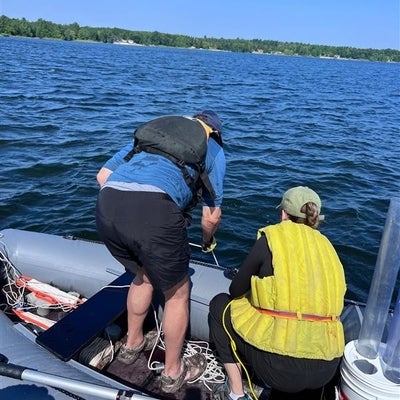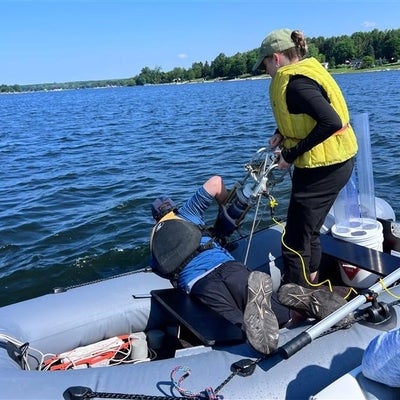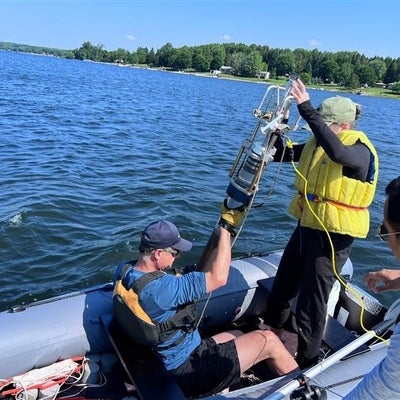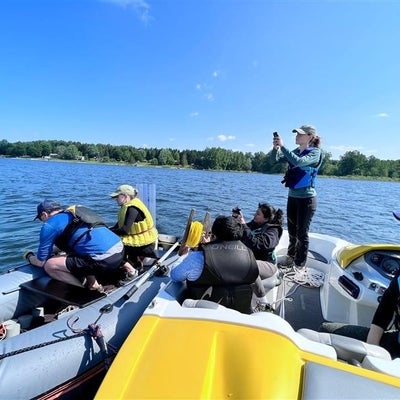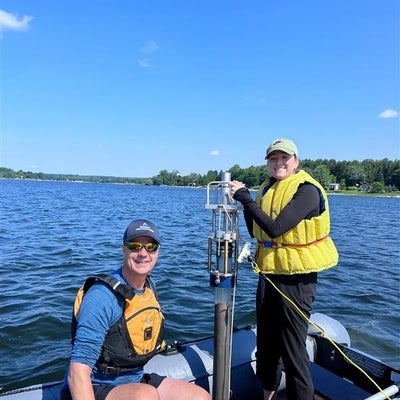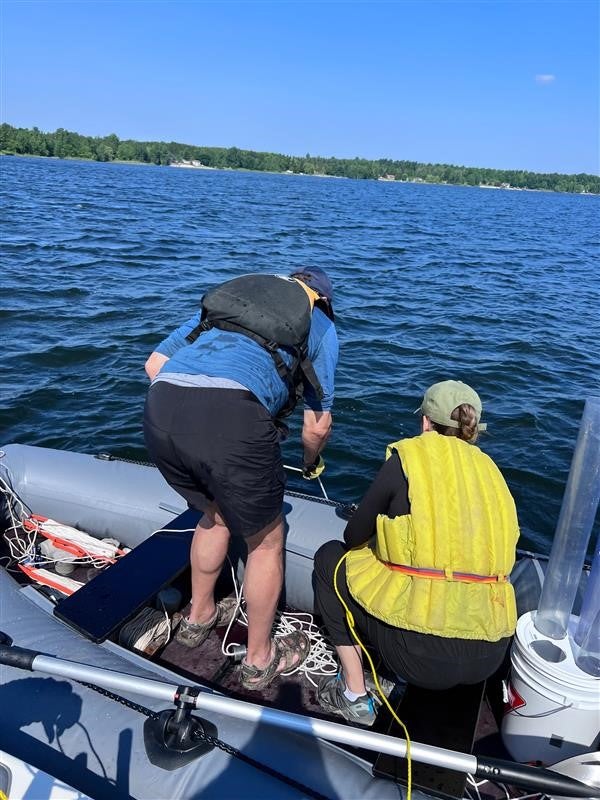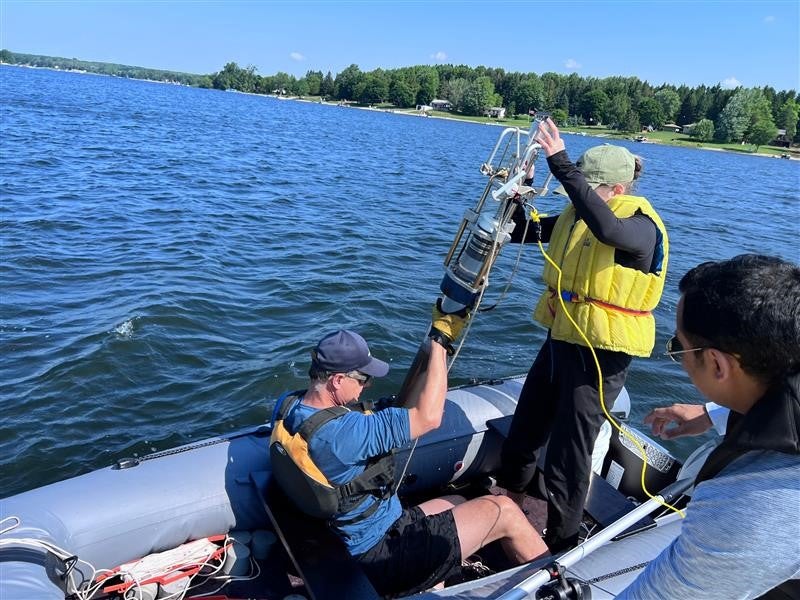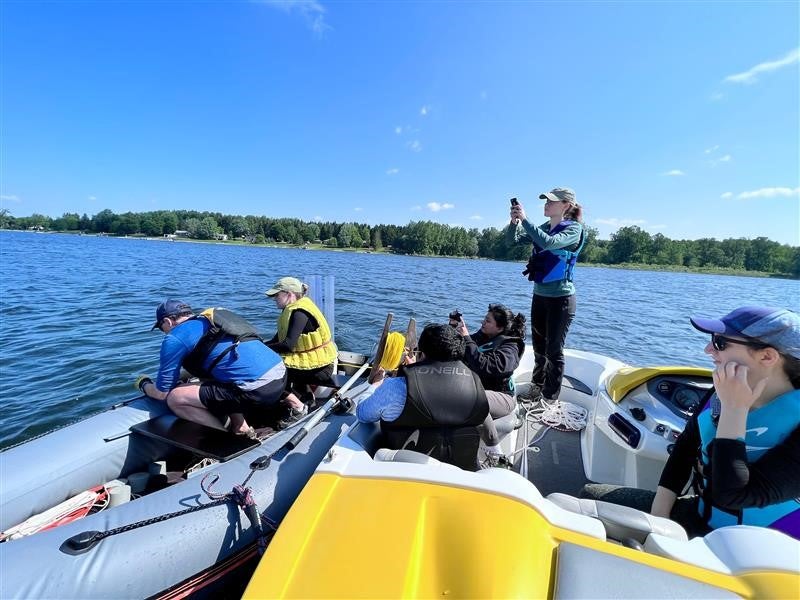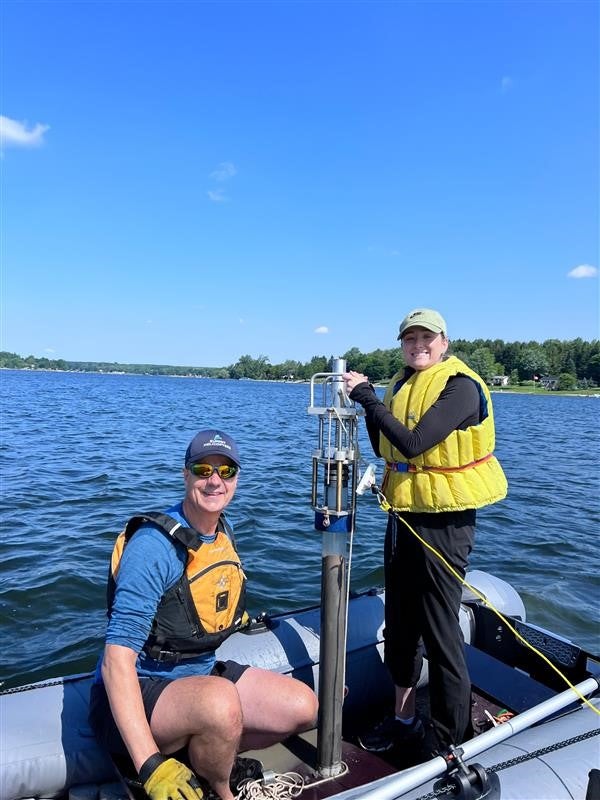Sediment core sampling at Conestogo Lake: A visual story
By Meredith Watson
On June 13th, a multidisciplinary team of students and researchers from the Microplastics Fingerprinting projectdrove about 45 minutes north of Waterloo to collect sediment core samples from Conestogo Lake. It will be up to Meredith Watson – a master’s student in the project – to analyze the core to look for changes over time in the abundance and composition of microplastics. This work will contribute to her thesis research project, which focuses on reservoirs and what they can tells us about factors that influence the movement and deposition of microplastics in the Grand River Watershed, an area affected by both rapid urbanization and agriculture.
The team arrived bright and early at 8 am and began by prepping an inflatable boat that would be low enough to the surface of the water to properly maneuver the coring equipment. They also had a small speedboat to help stabilize the coring boat and to bring the heavy sediment cores collected back to shore.
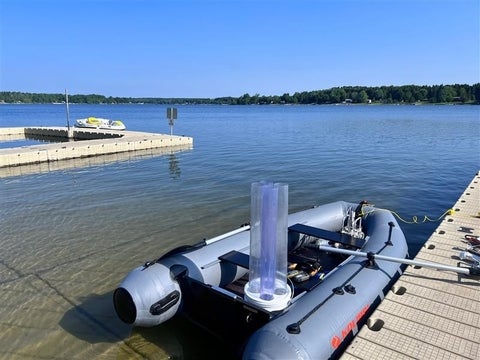
The boats took off for the coring site, located at exactly N43°40'38.9'' W80°43'13.5'', which had a depth of approximately 16 m.
Two sediment cores were successfully collected using a hammer driven gravity corer, with lengths of 67 cm and 54 cm. The coring process can be pictured below, which went very smoothly.
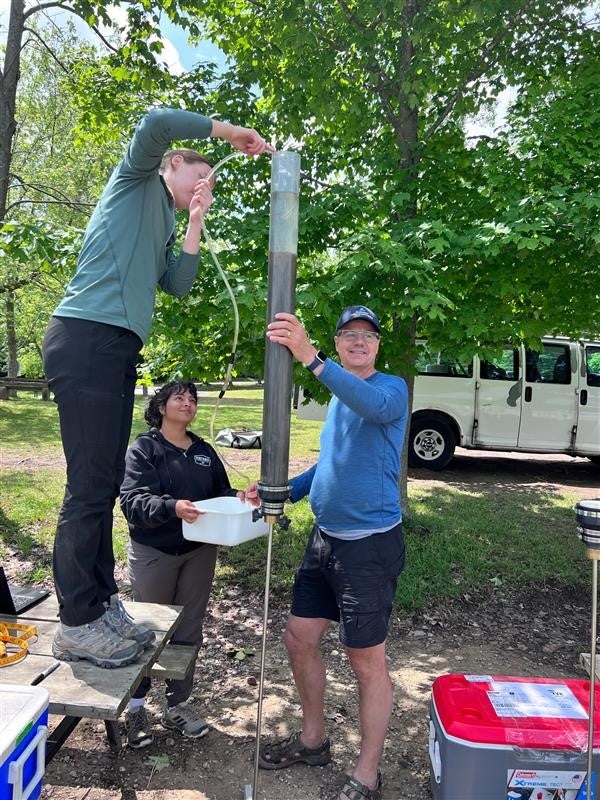
After returning to shore, sediment cores were sectioned on site into 1-cm intervals.
In the next few months, the team will radiometrically date the 67 cm long core and analyze it for microplastic abundance and composition using manual counting and LDIR. If you would like to know more about this research, contact Meredith (mc2watso@uwaterloo.ca).
